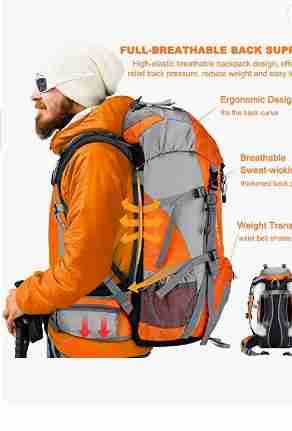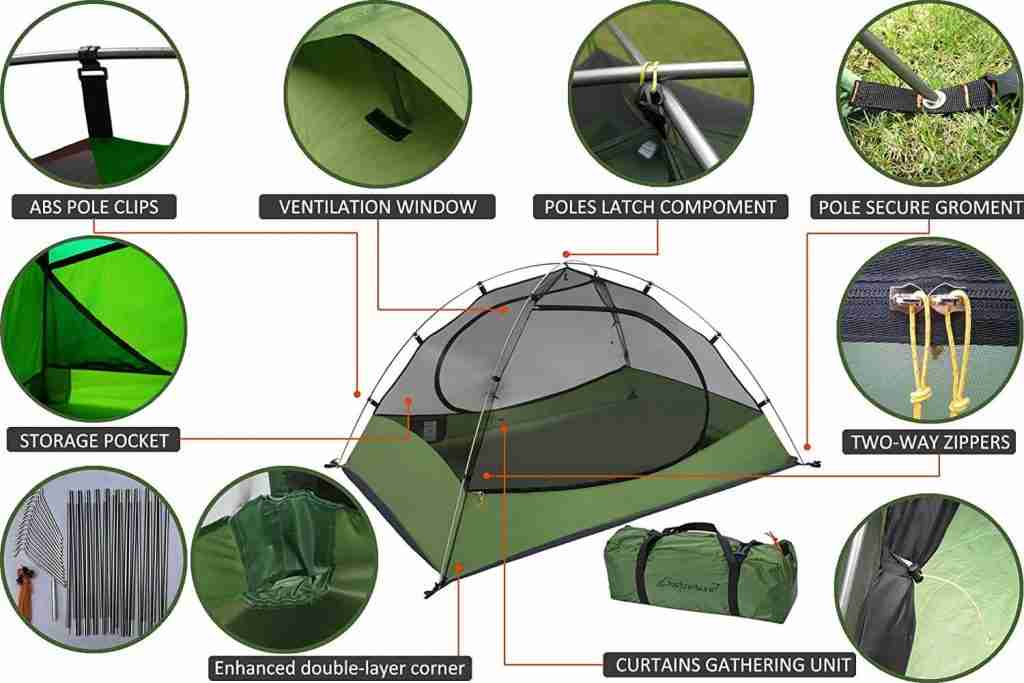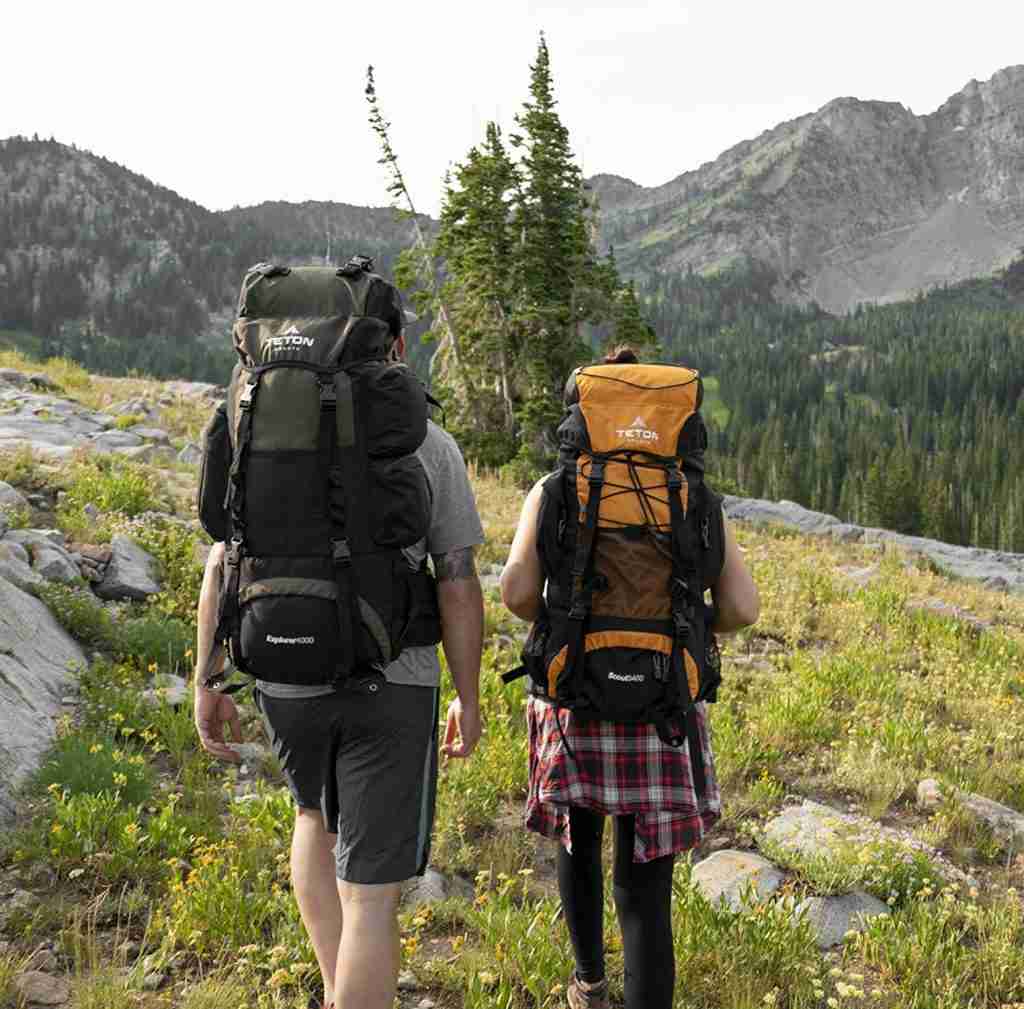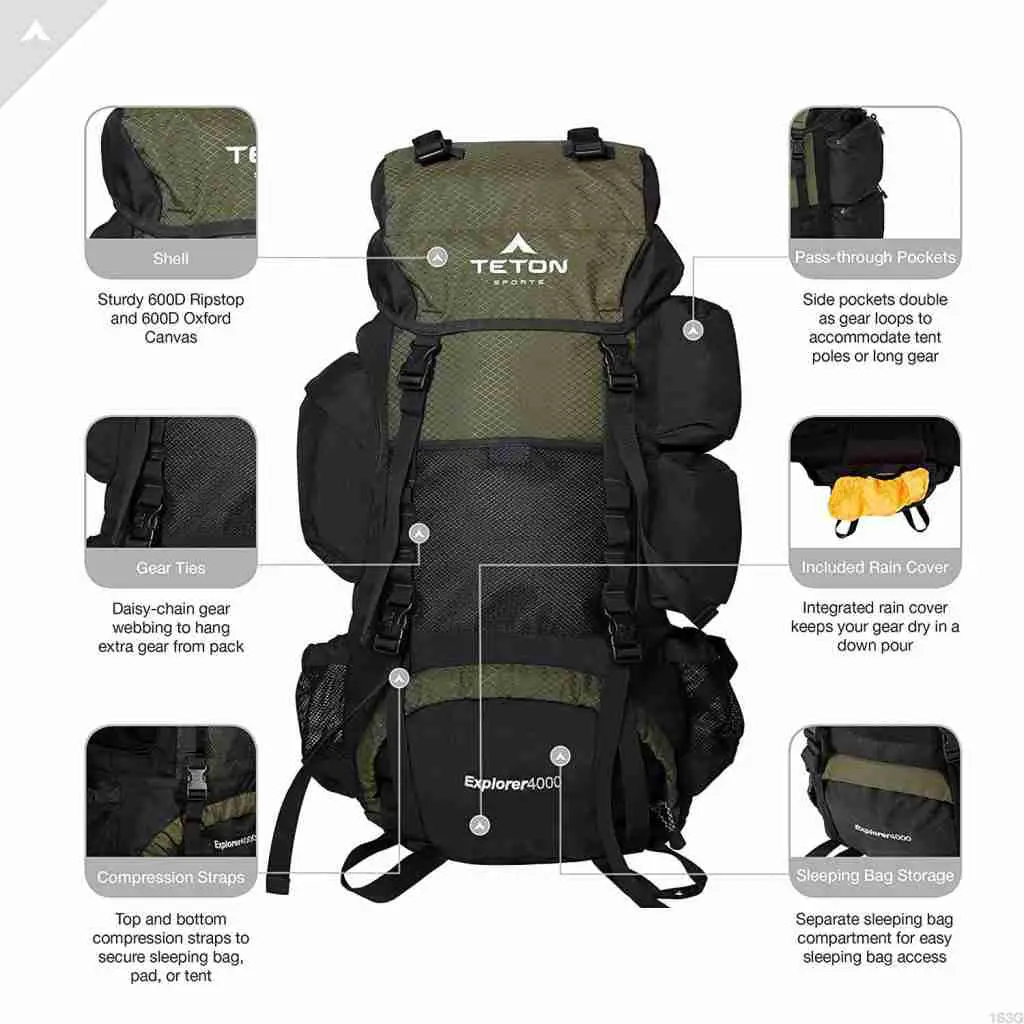Backpacks with multiple loops are sweet when it comes to navigating your way around how to attach tent and sleeping bag to backpack.
Most people will think it’s a case of easier said than done but I can assure you that backpack manufacturers have seen the battle we face daily, trying to attach multiple and large items to our backpacks.
The loops are our way out when confused about how to attach several items to our backpacks especially when the backpack is already filled, with a few other items like our sleeping bag and tent still lying here and there, unpacked.
Table of Contents
HOW TO ATTACH TENT AND SLEEPING BAG TO BACKPACK

The easiest way out if you are looking for how to attach a tent and a sleeping bag to your backpack is by getting a backpack that has multiple loops.
Most backpacks have 3 loops, one at the middle, one at the top, and the other at the bottom.
- Pack up your sleeping bag. Could be using a dowel rod and tying it up afterward or you can roll it up and stuff it in its stuff sack.
- Unpitch your tent and pack it up properly.
- Attach the sleeping bag to one of the loops, you can choose one which requires less weight. Most people will prefer the top loop.
- Adjust the straps till they are tight around the sleeping bag to prevent it from slipping off.
- Attach the tent to the middle loop or down loop. Whichever one you feel will be more comfortable for you is okay.
- Adjust the loops till they are tight around the packed-up tent.
RELATED: SLEEPING BAG VS BLANKET FOR CAMPING
HOW TO BACKPACK

Before we talk about how to backpack, in my previous article I explained how you can pack a sleeping bag without a stuff sack.
Aside from using a sack bag, one common bag we use for packing sleeping bags is a backpack.
Choose a location: I won’t advise you to start off like a nomad who has no idea of where he is headed but is generally in search of fertile grass for his flock.
Yes, there are some who would venture into a backpacking trip with no idea of where they are headed but the risks that can come with this decision supersedes the fun that accompanies it.
Get a guide and a map: Go along with a compass or better still take a guide who is well-versed with the routes so that you don’t end up either losing your way or entering into harm’s way due to pure naivety.
Plan your outfits: Go along with your camping gear. Put in extra blankets and beepers if it’s going to be really cold out there.
Nobody wears a bikini on a backpacking trip. Some might probably do it during summer but most people will most definitely not do that.
Redo your food menu: Remove the complicated foods and go along with the easy-to-prepare and easily accessible. I’ll advise you to go for light foods as heavy meals can make you very lethargic and pink-faced which can be very discomforting.
Go with lots of water and snacks: Prepare your mind to eat more snacks than actual food.
This is because backpacking is an outdoor activity that may not give you ample time to prepare your usual special delicacies and exciting recipes.
Besides who would carry a blender on a backpacking trip? Also include more cans of water to keep you hydrated all through your trip.
Get in the mood: Most people as much as they are planning to backpack may have little or no knowledge on how to really get into the spirit of backpacking.
Backpacking is more fun when you are ready to enjoy the experience. As far as I’m concerned there’s no point venturing into something when you are not ready to enjoy the feeling.
Getting in the mood will position your mind to accept whatever challenges that might come along with the experience.
It could be extremely cold, having to abide by the sometimes annoying rules that deal with you cleaning up after yourself each time to avoid pollution and lots more.
HOW TO PACK A TENT IN A BACKPACK

The most important thing to consider when trying to pack a tent in a backpack is weight. The middle loop is the best position for your tent when packing a tent in your backpack.
This is because heavy items are better placed in places that can give the carrier more balance.
Peradventure you want to pack the tent inside the backpack then here are things you should consider
- Backpack type: Backpacks with internal frames are bigger than their counterparts with external frames.
- Compare sizes: It’s normal that bigger tents will require you to use bigger backpacks while smaller tents can allow you to go with regular-sized backpacks.
- Pack your tents first: Do not unpitch and throw in your tents without first properly packing them up if you are concerned with your bag accommodating your tent. You can use tent bags or compression bags to make them smaller and easy to fit in.
- Ensure that your tents are dry before going ahead to pack them up inside your backpack. Wet tents can make your bags heavier than necessary and discomforting for you.
- The heavier items should be placed at the bottom and the lighter-weight items at the top. This means that your tent should be placed at the middle layer of the bag while your sleeping bag remains at the base of the bag.
- Easy-to-reach or easily needed items should be at the topmost layer of your backpack for easier access.
HOW TO PACK A SLEEPING BAG IN A BACKPACK
The easiest way how to pack a sleeping bag in a backpack is by first packing up the sleeping bag in a stuff sack before heading to pack it up in a backpack.

Roll up your sleeping bag as tightly as possible, squishing out every puff caused by accumulated air.
Stuff neatly into a stuff sack and tie up the strings.
Arrange all items that should go into your backpack on the floor, and separate them into sections and in order of priority.
Let the packed-up sleeping bag go in first, and lay it horizontally at the bottom of the backpack.
You can put the rest of the other items in their order of priority.
After the sleeping bag, the tent if you have one should follow suit, followed by your shoes, blankets, and your toothbrush which should be at the very top together with other basic items.
Do you want to know why your sleeping bag should go in first when trying to pack for your backpacking trip?
HOW TO CARRY WATER BACKPACKING
Here’s how to carry your water when backpacking, look out for the outer pockets of your backpack.
These pockets are usually seen on the two sides of your backpack and strap your water bottles on each of them.
You can also get a water can which can be strapped on the upper loop of your backpack or in the middle loop, depending on the weight of your backpack.
Below are things you should avoid when carrying your water can alongside other items for backpacking:
- Do not keep your water directly beside your sleeping bag. Spillage can occur and the sleeping bag when wet tents get heavier. Moreover, sleeping inside a wet sleeping bag will keep you cold than warm.
- Do not keep your water can directly beside your clothes. Clothes normally used for backpacking are generally limited and if most of them are wet, it might leave you stranded.
- Ensure that your water cans are properly closed. The cans when half open can distribute your water to the tracks that definitely need the water less than you do. By the time you would want to take a quick sip, you might be faced with an empty water can.
- Learn economy. Do not pour water on your head unless there’s a real reason for doing that. I’ve seen people who would occasionally pour water on their heads not because they feel fainty or flushed but because they’ve seen others do that.
- Your water cans should not be heavier than your capacity.
The answer is simple, the sleeping bag is usually the last thing you would be unpacking when you arrive at your destination.
There’s no point, in scattering the bag and bringing out the sleeping bag and your tent, each time you want to get a bottle of water.
HOW TO PACK A HIKING BACKPACK DIAGRAM
To begin, a hiking backpack features various pockets, some of which are utilized to organize your camping tent.
While some can merely hold a water bottle, the main compartment holds your clothes and possibly your sleeping bag.
Follow the instructions below to pack a hiking bag without stress:
- You can store/arrange your basics such as maps, guidebooks, compasses, sunscreen, and wallets in the outer compartment of your hiking bag. Etc.
- There is a component of your hiking backpack composed of water-resistant material known as the waterproof bag section. Phones, iPods, spare clothing, and even your sleeping bag are stored here to keep them dry.
- Water bottles, for example, should be positioned beneath the main body of the backpack for easy access.
- Lighter goods such as toothbrushes, sleeping mats, and other small treasures should be kept near the bottom of the hiking bag.
- Then, for quick access, stow your rain gear at the top of your backpack.
- Immediately following the raingear area, you organize your first aid supplies so that you may immediately get them in an emergency.
- Arrange the heaviest items, such as clothes and boots, in the largest section of your hiking bag.
- Most hiking backpacks feature a translucent netlike mesh on the outside, where you can comfortably put your fuel bottles upright.
- Finally, you can roll your tent and attach/strap it outside/under your hiking backpack which is protected with a waterproof sack.
You can go camping with everything intact. A more detailed explanation can be found in the figure above.
HOW TO ATTACH THINGS TO A BACKPACK

You can attach multiple things to your backpack by maximizing the use of the compression straps usually attached to the two sides of the bag.
Your water bottle can be fixed in between the straps and held firmly together with the buckles of the straps.
Peradventure you are going with some other tools, like your sledgehammer, you can slide in this hammer from the tail and allow the head to be wedged in between the straps, then you hold it with a buckle if you feel it might slip down and onto the floor.
The Pockets usually found at the stomach of your backpack can also be used to store other items.
If your backpack has no front pocket, you can choose to attach a fanny pack to your backpack to serve as extra pockets for putting things.
Unstrap the buckles and hug the bag round the backpack, exposing the pocket side of your fanny pack, then buckle the fanny pack at the inner part of your backpack, this is the part that usually rests on your back.
This way, it becomes easier to put additional items inside your fanny pack which has been attached to your backpack.
HOW TO PACK YOUR TENT SMALLER
Fold your tent first into small halves and roll it up as tight as possible before putting it into a compression bag if you want it to get smaller and easier to fit into a bag.
The compression bag is like a stuff sack that squeezes the tent into a smaller size.
HOW TO FOLD A BACKPACKING TENT
- Fold the tent into half
- Fold into another half to make it smaller
- Place the rain gauge on top of the folded tent.
- Roll as tightly as possible to smoothen out the puff-ups that are a result of too much air
- Stuff the rolled tent into a compression bag.
- Then put the packed-up tent inside your backpack.
Below are frequently asked questions on how to attach tent and sleeping bag to backpack:
CAN I FIT A TENT AND A SLEEPING BAG IN A BACKPACK?
You can fit in a tent and a sleeping bag all at once in a backpack.
For backpacks with multiple loops, attach the tent first at the middle loop and attach the sleeping bag second at the upper loop or at the lower loop.
However, if you are determined to put your tent and your sleeping bag right inside your backpack, then get a bigger backpack with internal frames.
Fold in the sleeping bag first at the bottom part of the bag and put the tent in the middle layer of the bag.
If for some reason, the tent is too big for the backpack, fold the tent first into a compressor to make it smaller before going ahead to put it inside your backpack.
WHERE DO YOU TIE A TENT ON A BACKPACK?
Your tent should be tied at the middle loop of your backpack. This is because heavier items are best placed in the middle for balance.
HOW DO YOU ATTACH A BACKPACKING BACKPACK TO A TENT?
Maximize the middle loop by sliding the tent right in between the loops. Then your tent has been successfully attached to your backpack.
CONCLUSION
Attaching a tent together with a sleeping bag in a backpack might be one of the most challenging aspects of backpacking for you. However, ways this can be made easier have been discussed above.
But an emphasis should be laid again on the type of backpack you should select if you intend to attach so many things to your backpack.
Get a backpack with multiple loops or a big-sized backpack with internal frames. This way, the packing process becomes easier and faster.
